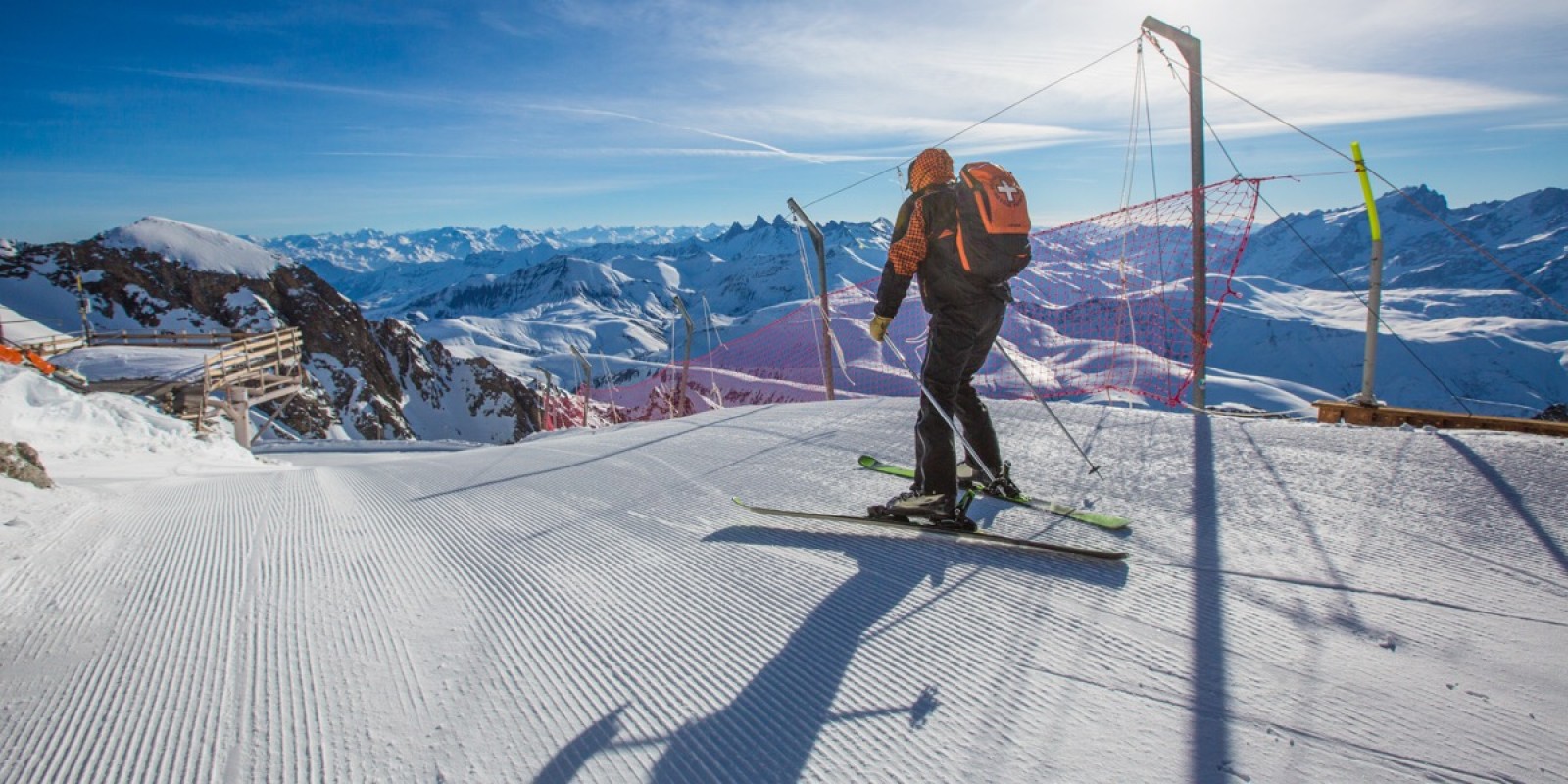How To Ski On Hard Packed, Icy Snow
How To Ski On Hard Packed, Icy Snow
No matter how much time and research you put into crafting your next ski trip, there’s one thing you really can't control – the weather. The most important factor in any day on the mountain is the snow conditions, and no two days are ever exactly the same.
There’s nothing better than fresh, powder covered slopes; with snow that cushions, grips and makes you feel like a superhero! However, these conditions (especially in the European Alps), are not always that common. So, as skiers, we must deal with what comes when there hasn’t been any new snow for a while - ice.
What Causes Icy Snow?
Ice usually forms when snow melts during the day as temperatures rise, turning to water. Once temperatures drop below freezing during the night, the water freezes and turns to ice. Rainfall often leads to ice formation as well.
The snow groomers do a great job of breaking up the ice crystals and leaving fluffed up, grippy snow in their wake. Unfortunately, this is just a superficial fix, as once enough skiers repeatedly ski over the same patches on slopes, they push the soft snow into moguls and expose the rock-hard surface underneath.
Why Is It Hard To Ski On Ice?
Skiing is all about friction. When trying to control speed while skiing, we use the edges of our skis as brakes. The metal protrudes into the snow and creates a stopping force, keeping us from accelerating.
When the piste is icy, the metal edges are unable to dig into the snow like usual, so instead of creating friction we'll just slide over the top of the ice. Skiing on ice is tricky, especially for beginners. Here’s a few tips to help you conquer the dreaded icy slopes.
How To Ski On Ice
It’s all about edging
- Despite the fact that the metal edges of our skis struggle to dig into the icy surface, it’s still the only way to control our speed and avoid going too fast. It’s important to be patient when skiing on ice. Don’t rush your turns and don’t try to force the skis round. Try to feel how much grip you have under your feet. Once you have the skis at a comfortable edge angle, bend progressively into the end of the turn. If you try to create too high of an edge angle, the skis will likely slip out underneath you.
Weight on outside ski – counter balance
- I’m sure you’ve heard this one before – keep your weight on your downhill (outside) ski. This becomes all the more important when skiing on ice, as we need to use our weight to help that outside ski edge find some grip and purchase. We can improve our outside ski weighting by counterbalancing our upper body against our lower body. Try to think about forming a nice “C” shape with your body. The legs are inclined to the hill, counteracting centripetal and ground reaction forces. The upper body is more upright, we’re trying to shift our centre of mass over the base of support on the outside ski to stop it from sliding. Remember to keep upper body separated (facing downhill).
Go with the flow (when sliding)
- Sliding over the top of ice (even though it feels like you’ve made a mistake) is an inevitable part of skiing on slick slopes. It can feel scary and out of your control, it’s important to relax and be patient until you come into contact with grippier snow again. After a short time sliding, your skis will eventually dig into the snow again and give you more control.
Try to stay in a balanced position
- Balance, balance, balance. Skiing feels so much safer and rewarding when you’re nicely balanced over your skis. This is especially true on ice, when we’re balanced we’re much more prepared for difficult conditions. Try to stay in a “stacked” position, with weight over the balls of our feet; ankles, knees and hips slightly bent; with our shoulders on top of knees on top of toes (in alignment). When we are balanced with the skis underneath us, a slide across the ice feels much more manageable, and even quite fun!
Seek out better snow (look for powder patches)
- Unless you’re flying down the Hahnenkamm, it’s unlikely that the entire piste will be covered with ice. Look ahead of you and try to seek out clumps of softer snow that will help you brake, turn and find grip. These ridges of snow really help you initiate turns, as they’re usually higher than the rest of the slope. We can use this “high point” to release the tails and let the skis turn.
Side slip if you have to
- Sometimes the slope is too daunting and the ice is too hard to employ these tactics mentioned above. In this case it’s best to just take it easy and try to side slip down the mountain. With skis perpendicular to the fall-line, release ankles and knees and roll feet until the skis start to slide. Reverse this motion to get the skis to dig in and stop again.

